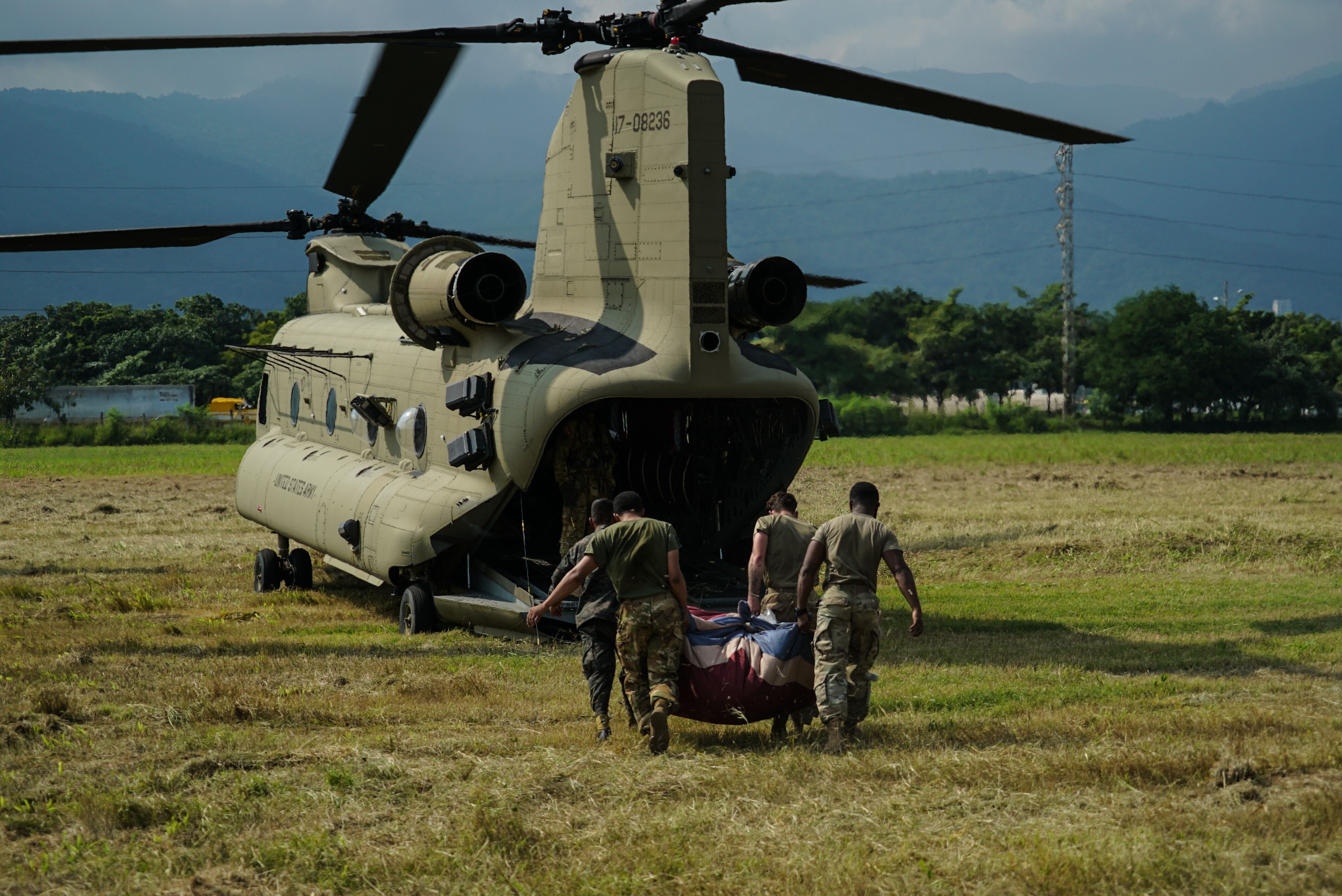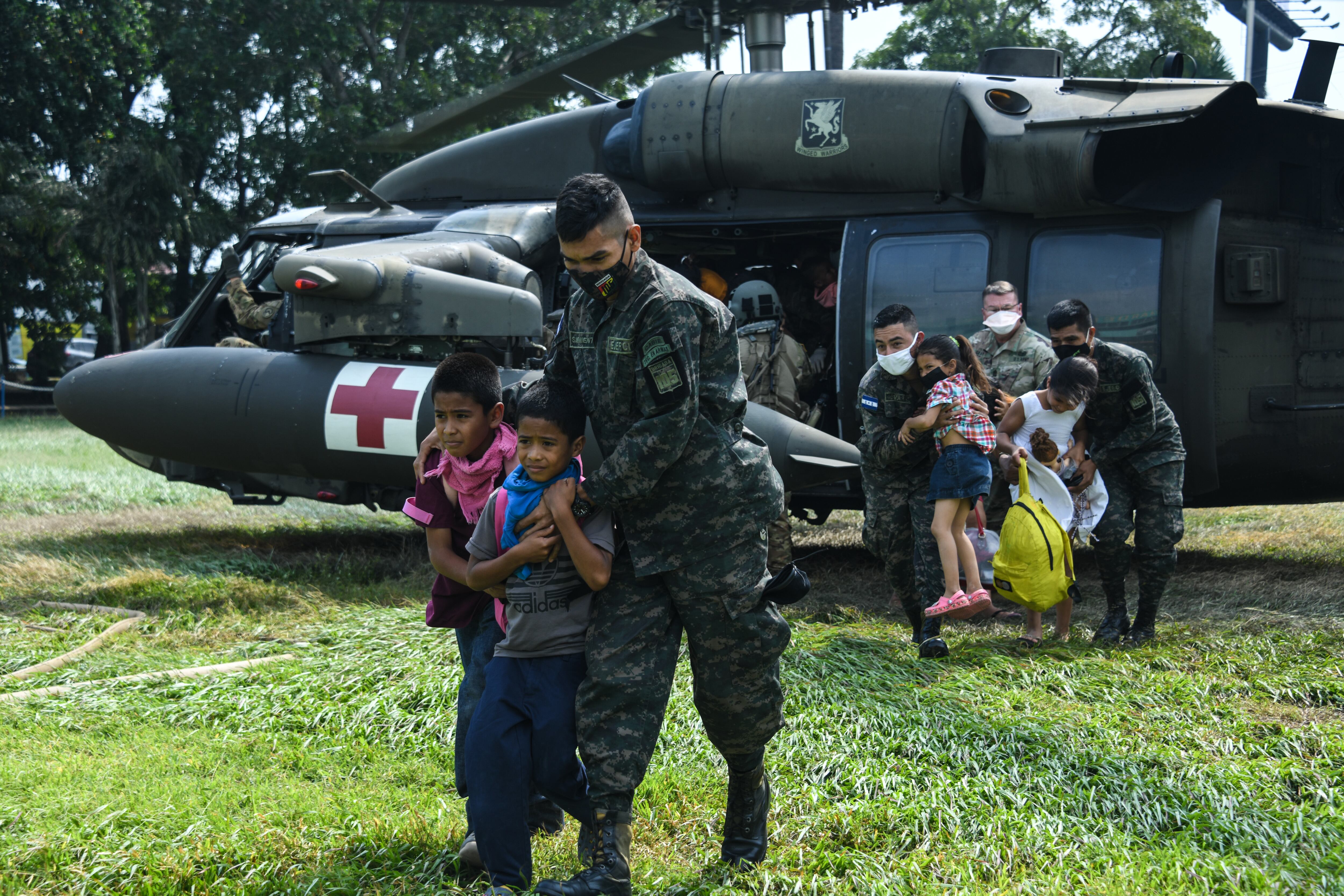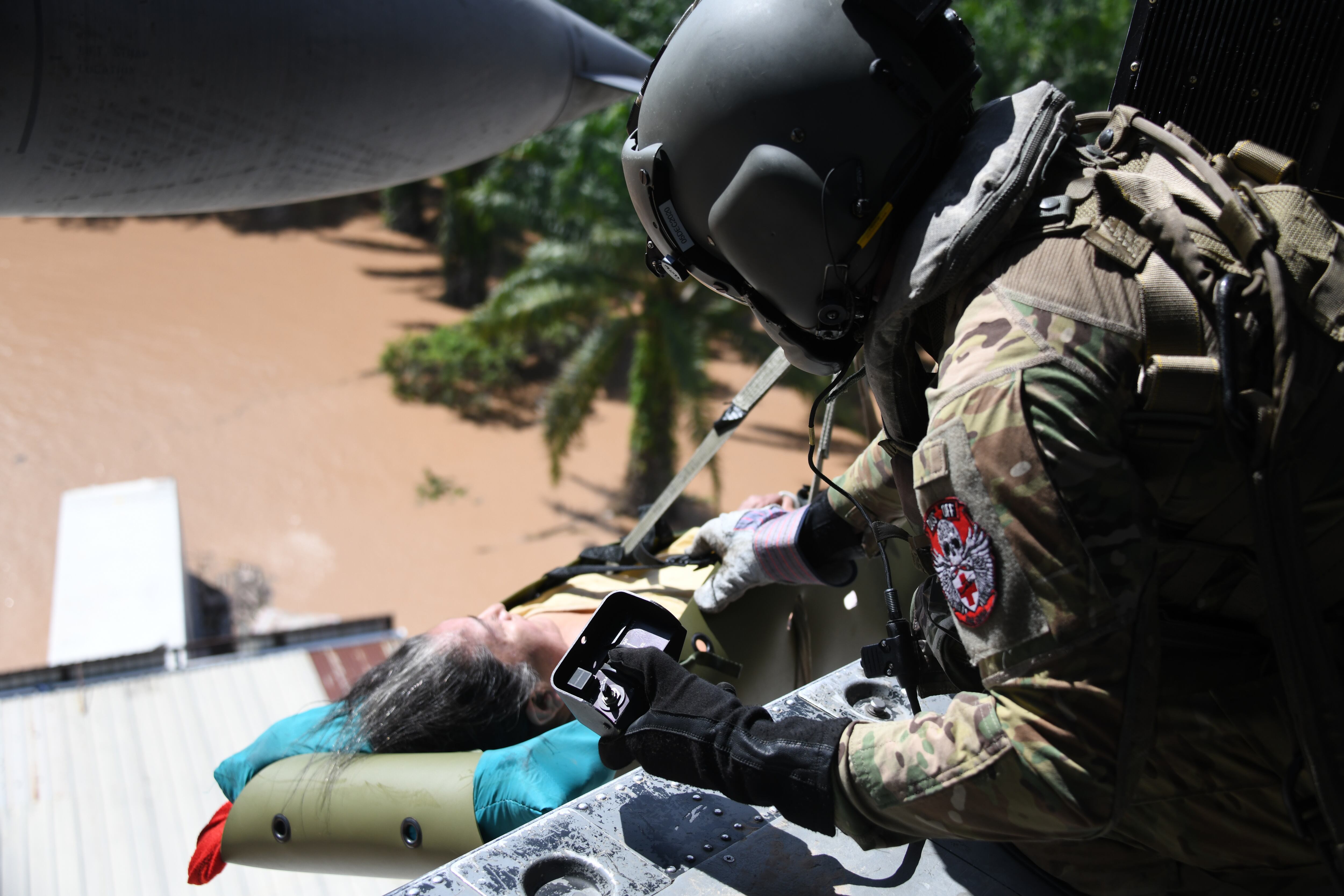After 10 days of disaster response in the wake of Hurricane Eta, all members of Joint Task Force-Bravo returned to Soto Cano Air Base, Honduras, on Sunday to prepare for another storm.
Hurricane Iota made landfall in Nicaragua on Tuesday, quickly weakening from a Category 4 hurricane with sustained gusts of 155 mph to a tropical storm, the National Hurricane Center reported at noon CST. The NHC predicted that Hurricane Iota would move farther inland across Nicaragua and into southern Honduras by Tuesday evening.
“With a second storm coming, it’s important for our teams to return to base, so we can regroup and better posture to rapidly deploy when the call comes,” said Army Col. John Litchfield, commander of JTF-B. “It will always be our goal to save as many lives as we can, and returning to home station now, puts us in a better position to do that.”
JTF-B personnel were waiting out the rain on Tuesday, ready to respond to disasters across Central America as soon as the need arises and the weather permits. For some, the downpour provided a welcome break.
“The rain has allowed us the ability to rest crews who have gone really hard over the last 10 days. It’s been really taxing both physically and mentally,” Army Lt. Col. Adam Bock, commander of the 1st Battalion, 228th Aviation Regiment, told Military Times. “As soon as the weather clears, we’re ready to go.”
The 228th Aviation Regiment composes JTF-B’s air assets with 10 UH-60 Black Hawks, four HH-60 Black Hawks, and six CH-47 Chinooks.
In the wake of Hurricane Eta, members of JTF-B, including the 228th’s aircrews, rapidly responded with life-saving support and humanitarian assistance in Panama, Guatemala, and Honduras. Between Nov. 5 and 10, members of JTF-B rescued 289 citizens, transported 85 host-nation first responders to towns and villages cut off by flooding, and completed 136 individual missions, according to Air Force Capt. Rachel Salpietra, director of public affairs for JTF-B.

The numerous helicopters and aircrews mobilized were responsible for the delivery of 378,000 pounds of life-saving aid and 63,200 pounds of USAID humanitarian aid.
SOUTHCOM is authorized to direct forces to foreign disasters and take immediate lifesaving actions, Salpietra said. Lifesaving supplies, therefore, could include items such as food, water, clothing, and medical supplies.
Humanitarian aid, which must be requested by a host nation and approved by the USAID, was delivered to Guatemala and Honduras and included items like face masks, shelter, food, and hygiene supplies.
“As these individuals get displaced and they’re consolidated in these remote villages and hospitals, they face the same COVID challenges that we face throughout America,” said Bock. “Trying to check conditions and keep people safe from the pandemic is as great a challenge to the local government as providing food and water.”

Hundreds of thousands were displaced from their residences across Central America when Hurricane Eta’s torrential rains caused severe landslides and flooding, something JTF-B expects to see more of in the days to come.
As Hurricane Iota passes through, the NHC predicted 10 inches to 20 inches of rain in Honduras, northern Nicaragua, southern Belize, and southeast and central Guatemala, regions already heavily impacted by the waters of Hurricane Eta.
“This hurricane probably got closer to our home base than the last one did, so we have to button down helicopters, secure our equipment, and protect as much as we can from the hurricane itself,” said Bock. “Once weather clears, we’ll pull all our aircraft out of the hangars and get the blades ready to turn whenever we’re called or needed.”
With current weather predictions, the task force doesn’t expect to be in the air until at least Thursday, according to Salpietra.
Harm Venhuizen is an editorial intern at Military Times. He is studying political science and philosophy at Calvin University, where he's also in the Army ROTC program.





